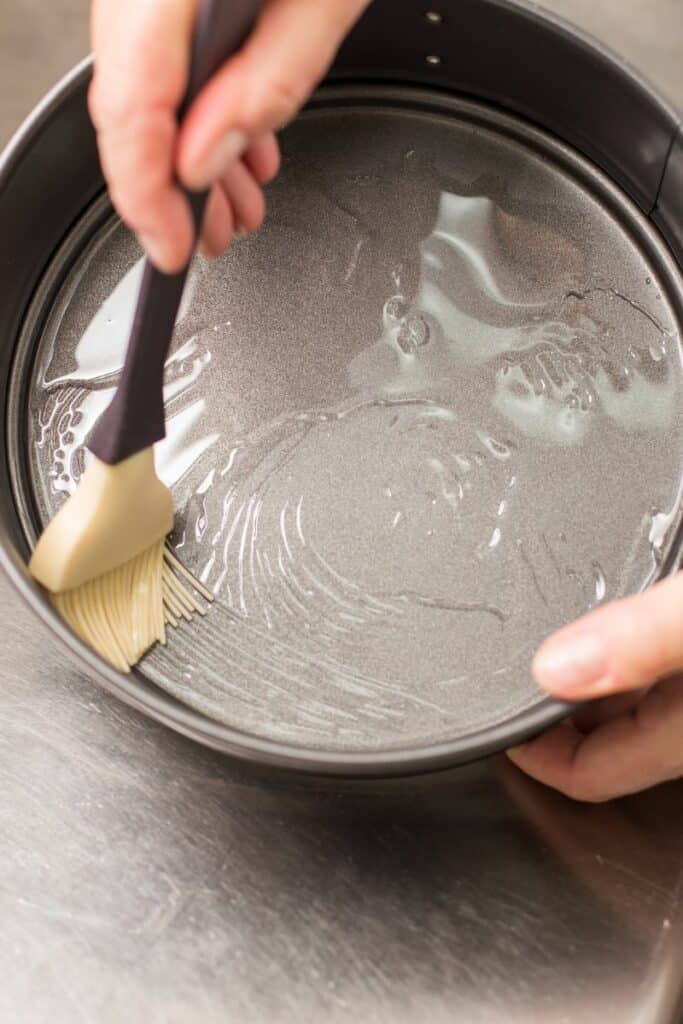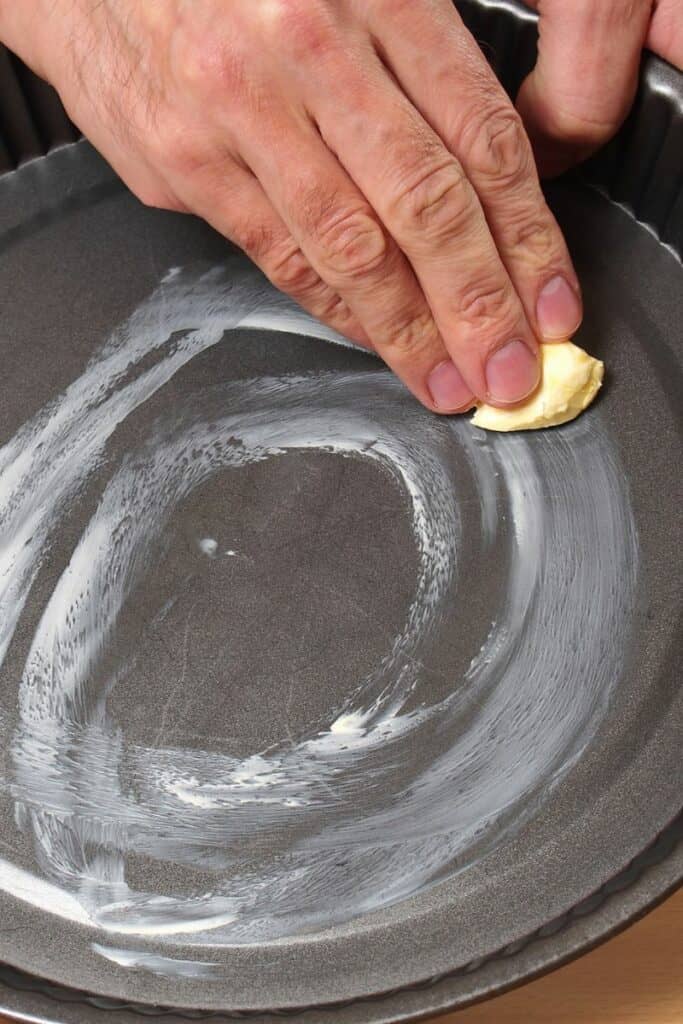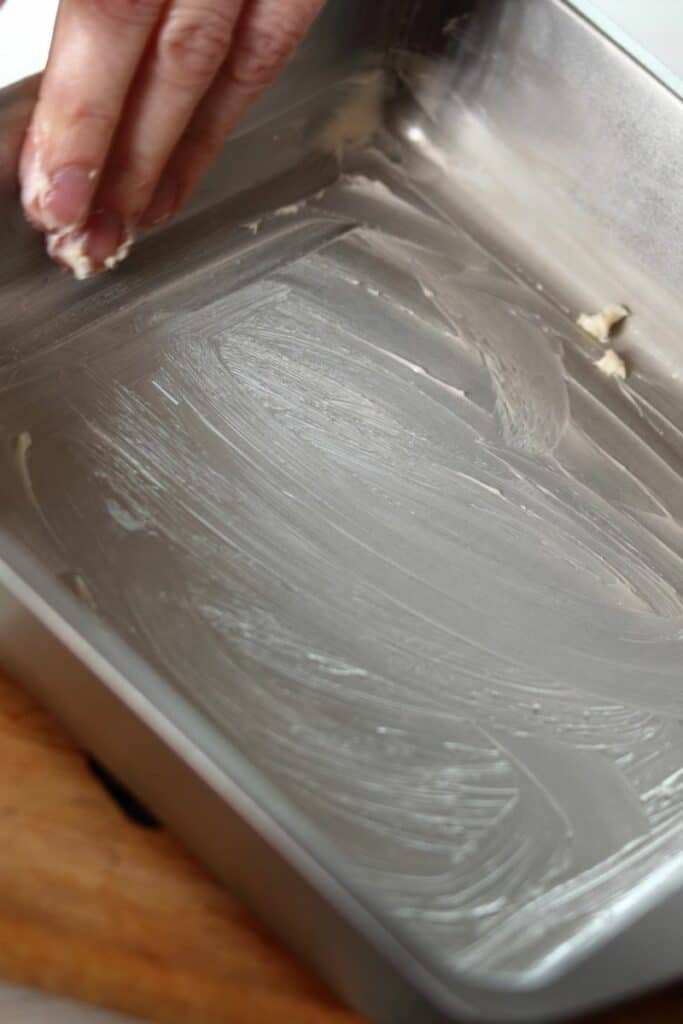I’m not sure if there’s a home chef out there that doesn’t use cooking spray on a regular basis! It’s a useful spray used to make our lives in the kitchen easier almost everyday, whether you’re baking or cooking.

This post may contain affiliate links. If you click on a link and make a purchase, I may receive a small commission at no extra cost to you. For more information, please read my disclaimer.
Considering finding a substitute for cooking spray in your next recipe? Here are some of my top choices for making the switch:
- Vegetable Oil
- Other Oils Such as Olive, Canola, Sunflower, and Avocado Oil
- Butter, Lard, and Other Fats
- Vegetable Shortening and Margarine
Cooking spray should never be used when using a nonstick surface, such as an air fryer due to its ingredient of soy lecithin. In those cases, the below recommendations work great!
What Can I Use in Place of Cooking Spray?
Vegetable Oil
This is my number one cooking spray substitute. It has an unassuming flavor, high smoke point, and is easy to use. Whether you’re using an air fryer or baking, vegetable oil is likely appropriate for any recipe you’re making.
I love putting vegetable oil in a EVO Oil Sprayer to use when needed.
Other Oils
Other neutral oils that work as a cooking spray alternative include olive oil, grapeseed oil, sunflower oil, and avocado oil.
In fact, canola oil is found in Pam itself! It’s an alternative to cooking spray that isn’t really an alternative at all – the application is just a bit different.
Sunflower oil has a bit of a nutty flavor, while olive oil has an herbal aroma. Therefore, using either of these will affect the flavor of your recipe – which may be okay! It all depends on the application and your preferences.
These oils can also be used and stored in an EVO Oil Sprayer to have on hand at all times!

Butter, lard, and other fats
Butter and animal fats are very effective degreasers and are useful in all areas of the kitchen!
By animal fats, I mean ingredients such as lard, tallow, and even leftover bacon fat. They vary in flavor, with tallow being neutral and bacon fat being extremely flavorful.
Used for non stick applications, there aren’t any modifications you really need to make for these options to work as a substitute for cooking spray.
Keep in mind that these fats are solid at room temperature. They’re easy enough to spread while solid or melt, however!
Vegetable shortening and margarine
These plant-based ingredients are effective non stick substitutes for anyone with dairy intolerances or those seeking a vegetarian option.
Vegetable shortening does not have a strong flavor, whereas most margarines you’ll find do. These are also solid at room temperature and do not liquify easily, but are still easy to spread as degreasers.
They’re also a much healthier substitute for cooking spray than butter, lard, and other animal fats!

Can I Use Butter Instead of Cooking Spray?
You can easily use butter as an alternative to cooking spray. It’s an especially good substitute for cooking spray when baking and browning on the stove top.
On the flip side, however, it has a relatively low smoke point. So, if you’re looking to get a quick sear or do some high heat stir frying, it may not be the best choice.
Of course, butter has its own flavor that you’ll need to consider. While its creamy, rich flavor is often enjoyed, there may be times that it does not fit in your dish. Unsalted is likely the best choice to control the level of seasonings in your dishes.
What Can You Use Instead of Nonstick Spray in Baking?
Butter and lard are among the best cooking spray alternative options out there, as they help to brown edges and give a rich, flavorful crust.
Those with dairy sensitivities can use non-dairy and other plant-based alternatives. Vegetable shortening and margarine are effective degreasers, for example, and you have olive, vegetable, and other oils to choose from as well.
Plain flour is another great substitute for cooking spray as long as you’re not baking at too high of a temperature. Any recipes that bake at temperatures higher than 350°F aren’t great candidates for flour.
Can I Make My Own Cooking Spray?
You absolutely can!
The sprays that you buy from the store are usually just watered down oils (with some other additives in there – one of the reasons to seek a cleaner substitution).
Therefore, to make your own cooking spray… just add some water to an oil of your choice! The amount you’d like to water it down depends on the intensity of flavor you’re looking for. Generally, though, a 1:1 ratio is a safe choice.
An old-fashioned trick you might want to try: add flour to your homemade cooking spray, particularly when you’re greasing a pan for baking. It’s nonstick, inexpensive, and effective!

How to Spray Oil Without a Sprayer
The biggest drawback to using a cooking spray substitute or homemade cooking spray is that you don’t have the same easy application.
But you can make it easy! It isn’t expensive to invest in a spray bottle (like this EVO Oil Sprayer) that is designed to work with cooking oil. Your average spray bottle can work, too, but it may become clogged more easily, and the oil spray won’t be as evenly dispersed.
If you’d rather not use a sprayer at all, then simply apply the oil of your choice to a paper towel and spread it by hand.
Other Substitutions You May Need:
